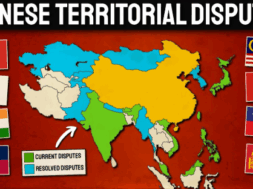
Monsoon: Above-normal rainfall likely this year, says IMD
Virendra Pandit
New Delhi: A week after private weather forecaster Skymet predicted normal rains this year, India Meteorological Department (IMD) on Monday announced that the country is likely to receive above-normal cumulative rainfall in the 2024 monsoon season with La Nina conditions expected to set in by August-September.
However, normal cumulative rainfall does not guarantee uniform temporal and spatial distribution of rain across the South Asian country, with climate change further increasing the variability of the rain-bearing system.
Climate scientists say the number of rainy days is declining while heavy rain events (more rain over a short period) are increasing, leading to frequent droughts and floods.
Based on available data between 1951 and 2023, India experienced above-normal rainfall in the monsoon season on nine occasions when La Nina followed an El Nino event, IMD Director-General Mrutyunjay Mohapatra told a press conference in the national capital.
India is likely to see above-normal rainfall in the four-month monsoon season (from June to September 2024) with cumulative rainfall estimated at 106 percent of the long-period average (87 cm), he said.
Positive Indian Ocean Dipole conditions are predicted during the monsoon season. Also, the snow cover in the Northern Hemisphere is low. These conditions are favorable for the Indian southwest monsoon, Dr. Mohapatra said.
Moderate El Nino conditions, which are prevailing at present, may turn neutral by the time monsoon season commences. Thereafter, models suggest, La Lina conditions may set in by August-September, he said.
India received “below-average” cumulative rainfall — 820 mm compared to the long-period average of 868.6 mm — in 2023, an El Nino year. Before 2023, India recorded “normal” and “above-normal” rainfall in the monsoon season for four years in a row.
El Nino conditions — periodic warming of surface waters in the central Pacific Ocean — are associated with weaker monsoon winds and drier conditions in India.
Three large-scale climatic phenomena are considered for forecasting monsoon season rainfall.
The first is El Nino, the second is the Indian Ocean Dipole (IOD), which occurs because of differential warming of the western and eastern sides of the equatorial Indian Ocean, and the third is the snow cover over the northern Himalayas and the Eurasian landmass, which also has an impact on the Indian monsoon through the differential heating of the landmass.
The southwest monsoon delivers about 70 percent of India’s annual rainfall, which is critical for the agriculture sector, which accounts for about 14 percent of the country’s GDP but employs nearly half the workforce for months.
According to Skymet, monsoon rains are expected to be 102 percent of the long-period average (LPA) of 868.6 mm (86.86 cm) from June to September 2024, with a model error of plus and minus five percent.
The nationwide LPA for these four months is around 870 mm (87 cm). Cumulative monsoon rains nationwide between 96-104 percent of LPA are considered as ‘normal.’
In its earlier forecast also, released on January 12, 2024, Skymet assessed the monsoon 2024 to be ‘normal.’
“El Nino is swiftly flipping over to La Nina. And, monsoon circulation tends to be stronger during La Nina years. Also, the transition from Super El Nino to strong La Nina has historically tended to produce a decent monsoon.














